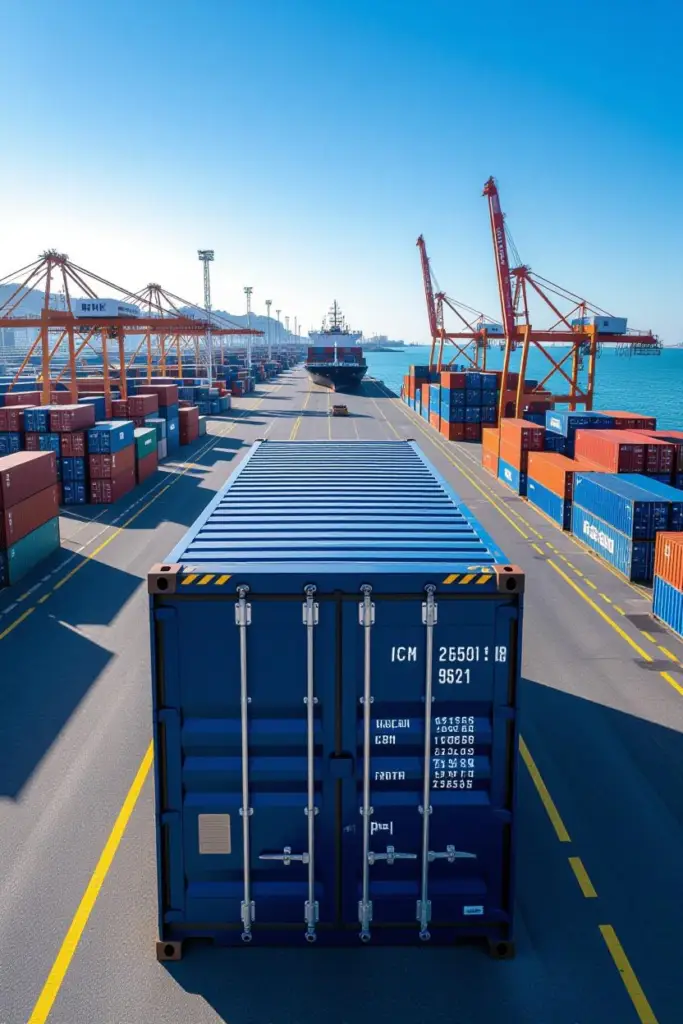Ever seen shipping containers labelled A, B or C and wondered if you’re buying steel gold, a fixer-upper, or a glorified rust bucket?
If you’ve dipped a toe into the container market, you’ll know that sellers and rental companies don’t just flog “containers”—they flog graded containers. These grades, typically A, B, and C, tell you everything about the condition, lifespan, and price of the box you’re buying (or renting).
Think of it like second-hand cars. Grade A is the nearly new BMW, Grade B is the reliable Ford Fiesta with a few miles on the clock, and Grade C… well, it’s the banger you only drive to Aldi and back. For container buyers, these grades can mean the difference between a watertight storage solution and a drafty metal headache.
In the UK market, grades matter more than ever. Prices have climbed, availability fluctuates, and demand for conversion projects is soaring. Knowing the difference between A, B, and C could save you thousands—or stop you accidentally ordering a container that looks like it’s survived a zombie apocalypse.
Let’s break down what each grade means, what it costs, and which one makes sense for your project.
Container Grades Explained
Grade A (a.k.a. One-Trip or “Nearly New”)
- Condition: Used once to ship goods internationally, then sold. Almost pristine.
- Looks: Minimal dents, clean paint, doors seal tight. Could be mistaken for brand new.
- Cost: Typically £2,500–£3,500 for a 20ft. Around £4,000–£5,500 for a 40ft.
- Ideal for:
- Conversions (cafés, offices, homes).
- Businesses needing long-term storage with minimal maintenance.
- Anyone who doesn’t want a rusty eyesore in their garden.
- Conversions (cafés, offices, homes).
Pros: Long lifespan, higher resale value, easy to modify.
Cons: Steep upfront cost.
Grade B (Cargo Worthy)
- Condition: Used several times for shipping but still in solid, functional state.
- Looks: Scratches, scuffs, faded paint. Some cosmetic dents, but doors work and seals are intact.
- Cost: £1,800–£2,500 for a 20ft. Around £3,000–£4,000 for a 40ft.
- Ideal for:
- Medium-term storage.
- Construction sites.
- Businesses with budget constraints but needing reliable storage.
- Medium-term storage.
Pros: Cheaper than Grade A, still wind and watertight, functional.
Cons: Less pretty, shorter remaining lifespan.
Grade C (Wind & Watertight, As-Is, or “Budget Special”)
- Condition: Heavily used. May have visible rust, repaired patches, or warping. Still wind and watertight (for now).
- Looks: Scruffy. Think peeling paint, dents, and “character”.
- Cost: £1,000–£1,600 for a 20ft. Around £2,000–£3,000 for a 40ft.
- Ideal for:
- Cheap storage where appearances don’t matter.
- Agricultural use (hay, tools, machinery).
- Short-term projects with no resale concerns.
- Cheap storage where appearances don’t matter.
Pros: Cheapest option, still does the job for storage.
Cons: Limited lifespan, resale is poor, not suitable for conversions.

The Market in 2025
- Grade A containers are in high demand thanks to the booming container home and office trend. Supply is tight, meaning prices have crept up.
- Grade B remains the most popular choice for UK businesses—balancing reliability with cost.
- Grade C is still available in abundance, but they’re increasingly being snapped up by farmers and builders looking for quick, affordable space.
Case Study: The Builder’s Choice
A construction company in Birmingham needed two 20ft containers for on-site storage. The director initially wanted Grade A, worried that B wouldn’t be good enough. The quote? £6,000 for two one-trip containers, delivered.
After reassessment, they went with Grade B at £4,200 total. The containers weren’t pretty—dents and a bit of cosmetic rust—but perfectly sealed and lockable.
Three years later, both containers are still in use. No leaks, no disasters, and the company reckons they saved nearly £1,800, which went towards site equipment.
Lesson learned: not every project needs a showroom-condition box.
“A container’s grade is like dating profiles—Grade A looks flawless, Grade B has ‘a few quirks but solid character,’ and Grade C is ‘great personality, needs some TLC’.”
Not sure which grade suits your needs? Whether you need Grade A perfection or a scrappy Grade C workhorse, Cubus Containers can help you find the right box at the right price.
- Meta Title: Container Grades A, B, C: What They Mean for You
- Meta Description: Learn the difference between container grades A, B and C. From nearly new to budget specials, find the right shipping container for your needs.
- Keywords: container grades UK, Grade A shipping container, Grade B container, Grade C container, buy used containers, 20ft container grades
Renting vs Buying a Shipping Container: Smart Decision or Expensive Regret?










